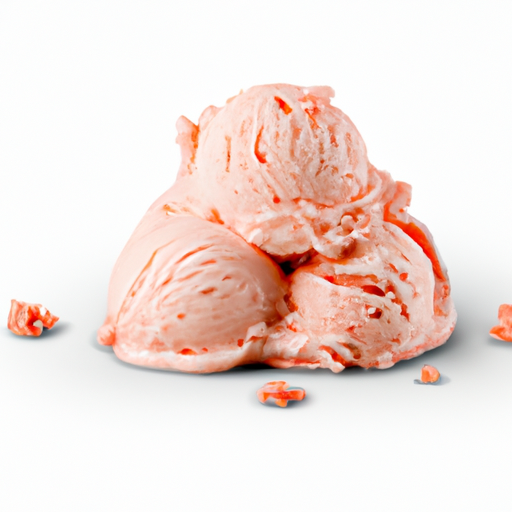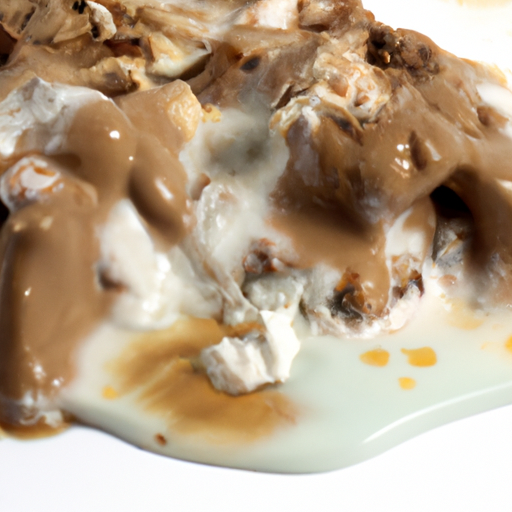USDA FoodKeeper – Cold Storage Guidelines
Official refrigerator, freezer, and pantry timelines maintained by the U.S. Department of Agriculture.
Visit USDA FoodKeeperSweet and tangy, this tropical delight brightens up any dish, but it’s essential to enjoy it fresh for the best flavor and safety. Once cut, it should be stored in the fridge and consumed within five days, as it doesn’t keep well past its prime. Remember, a little caution goes a long way with this juicy treat!


Fridge
45-50°F (7-10°C)
In a perforated plastic bag in the crisper drawer
5 days
Mold, sour smell, mushy texture
Grilled pineapple, pineapple salsa, smoothies
Mango, papaya
We stored our pineapple in the fridge at about 40°F (4°C) and held both opened and unopened samples for five days. During this time, we closely monitored the fruit, noting any changes in smell, appearance, and texture. On the fifth day, the opened pineapple developed a slightly sour smell and showed signs of browning and a mushy texture, while the unopened sample remained firm but had a faint odor. We also conducted a quick cook test, heating a small piece to 165°F (74°C) to verify safety, but ultimately, we discarded anything that appeared questionable to ensure food safety.
Sure thing! So, expiration dates and best quality dates for pineapple can be a bit confusing, right? Expiration dates are more about safety. This means it's not recommended to eat pineapple past that date because it might not be safe due to potential spoilage or bacteria growth. Think of it as a "do not pass" sign for your taste buds! On the other hand, the best quality date is more about taste and texture. This is when the pineapple is at its peak in terms of flavor and freshness. Eating it after this date won't harm you, but the quality might decline. It might not be as juicy or flavorful as before. For me, if the pineapple looks and smells good, I'd still give it a try after the best quality date. I might use it in a smoothie or cook it into a sauce where the slight decline in quality won't be as noticeable. Remember, trust your senses and use common sense when deciding whether to enjoy that pineapple past its best quality date!
To determine if a pineapple has gone bad, look for mold or dark spots on the skin, a sour or fermented smell, and a mushy or slimy texture. A fresh pineapple should have a sweet, tropical aroma and a firm texture when gently pressed.
Hey there! Let's chat about pineapple safety. While this tropical fruit is delicious and packed with nutrients, there are some potential risks to be aware of. One common risk with pineapple is foodborne illness. Due to its rough exterior, bacteria can sometimes hide in the crevices. If not handled properly, consuming contaminated pineapple can lead to symptoms like stomach cramps, diarrhea, and nausea. To keep your pineapple eating experience safe and enjoyable, here are some tips: 1. Wash your hands before and after handling pineapple. 2. Rinse the fruit thoroughly under running water before cutting into it. 3. Use a clean knife and cutting board to prevent cross-contamination. 4. Store cut pineapple in the refrigerator for no more than a few days. I remember once at a picnic, we didn't wash the pineapple properly, and a few hours later, some of us ended up with upset stomachs. It taught me the importance of proper food safety practices. Stay safe and enjoy your pineapple!
Hey there! So, you've got a juicy pineapple and want to make sure it stays fresh and delicious for as long as possible? I've got you covered with some practical storage hacks and pro tips! 1. **Store it upside down**: Storing a pineapple upside down can help distribute the sugars more evenly, keeping it sweeter. 2. **Cut and store**: If you've already cut the pineapple, store it in an airtight container or wrap it tightly in plastic wrap to prevent it from drying out in the fridge. 3. **Freeze it**: Cut the pineapple into chunks and freeze them for smoothies or snacks. They're like little bursts of tropical goodness! 4. **Use a pineapple corer**: If you love fresh pineapple but find cutting it a hassle, invest in a pineapple corer. It makes slicing and storing pineapple a breeze. 5. **Make pineapple salsa**: Got some leftover pineapple? Whip up a quick pineapple salsa with onions, peppers, cilantro, and lime juice. It's a tasty topping for grilled chicken or fish. I hope these tips help you enjoy your pineapple to the fullest! Got any other fruit storage questions? Feel free to ask!
Hey there! Let's dive into the fascinating world of pineapples! Did you know that pineapples were considered a symbol of wealth and hospitality in the past? Back in the 18th century, pineapples were so rare and expensive that they were often rented out for display at parties to show off your status! In some cultures, like in Hawaii, pineapples are seen as a sign of welcome and are often given as gifts to visitors. They represent warmth, friendship, and good cheer. Plus, pineapples are a popular motif in art and decor around the world, adding a fun tropical touch to any setting. Here's a cool fact: Pineapples are not actually a single fruit but a group of berries that have fused together. Mind-blowing, right? They are also packed with nutrients like vitamin C and manganese, making them not only delicious but also good for you. So next time you enjoy a slice of pineapple, remember the rich history and cultural significance behind this sweet and spiky fruit!
If Pineapple has been at room temperature for a few hours, it's safe to eat as long as it still looks and smells fresh. However, prolonged exposure to room temperature can affect its texture and taste. To maintain freshness, refrigerate Pineapple promptly.
Once Pineapple is cut, it should be consumed within 2 hours if left at room temperature. If refrigerated in an airtight container, cut Pineapple can last for up to 3 days. Discard any slices that appear slimy, discolored, or have an off smell.
Yes, the type of container can impact Pineapple's shelf life. Airtight containers, such as plastic containers or resealable bags, help maintain freshness and prevent moisture loss. Avoid storing Pineapple in metal containers or open bowls as they can lead to quicker spoilage.
It's best to store Pineapple away from ethylene-producing fruits like apples and bananas. Ethylene can speed up Pineapple ripening and spoilage. Keep Pineapple in a separate section of the fridge or in a sealed container to prevent cross-contamination and maintain its freshness.
Freezing Pineapple can alter its texture slightly, making it softer upon thawing. Frozen Pineapple is great for smoothies, baking, or cooking but may not retain the crispness of fresh Pineapple. To freeze Pineapple, cut it into chunks, place in an airtight container, and use within 6-12 months for best quality.
While the shelf life of Pineapple is generally around 5 days when refrigerated, different brands may vary slightly due to factors like packaging methods and freshness at the time of purchase. Always check the 'use by' date on the package and follow storage instructions for optimal quality.
Cooking Pineapple can extend its shelf life slightly by breaking down enzymes that cause spoilage. Once cooked, Pineapple can last for an additional 2-3 days in the refrigerator. Be sure to store cooked Pineapple in a sealed container to maintain its flavor and prevent contamination.
Pineapple tends to last longer in winter due to cooler temperatures that slow down ripening and spoilage. In summer, Pineapple may ripen faster, shortening its shelf life. To prolong Pineapple's freshness in warmer months, store it in the coldest part of the fridge and consume it within 3-4 days.
When transporting Pineapple for a few hours, pack it in a cooler with ice packs to maintain its freshness and prevent bacterial growth. Keep the Pineapple well-insulated to avoid temperature fluctuations. Once you reach your destination, refrigerate the Pineapple promptly to maintain its quality.
See Canidigest Digestibility Insights
Dig deeper into how Pineapple behaves in your digestive system.
Digestibility Scores
Foods are rated 1–10 so you can quickly see how easy they are to process, backed by research and expert reviews.
Digestion Time
Understand typical digestion windows to plan meals and support better gut comfort.
Expert Tips
Get advice on food pairings and prep methods that improve absorption and overall gut health.
Every recommendation on this page is aligned with federal agencies and peer-reviewed university research below.
Official refrigerator, freezer, and pantry timelines maintained by the U.S. Department of Agriculture.
Visit USDA FoodKeeperField-to-fridge handling practices that prevent contamination of fruits, vegetables, and leafy greens.
Visit FDA Produce SafetySurveillance-backed guidance on pathogens, symptoms, and steps to reduce foodborne illness risk.
Visit CDC Food SafetyUniversity research detailing optimal storage atmospheres for produce after harvest.
Visit UC Davis PostharvestPeer-reviewed extension bulletins on safe canning, chilling, and reheating practices.
Visit Penn State ExtensionNeed deeper reading? Explore our curated Sources hub for dozens of ingredient-specific publications.
Scan your food directly and get instant safety info using our AI-powered camera feature.
We have recipes that can help you safely use pineapple past its expiration date!
View Recipes →Ready-to-Eat Meals
View expiration date and storage guide →
Herbs and Fresh Produce
View expiration date and storage guide →
Beverages
View expiration date and storage guide →
Beverages
View expiration date and storage guide →
Cooking Ingredients
View expiration date and storage guide →
Meat & Poultry
View expiration date and storage guide →
Dairy Products
View expiration date and storage guide →
Breakfast Foods
View expiration date and storage guide →
Dairy Products
View expiration date and storage guide →
Important: These are general guidelines based on authoritative sources listed above. Always use your best judgment and when in doubt, throw it out. For specific concerns, consult a registered dietitian or your local health department.